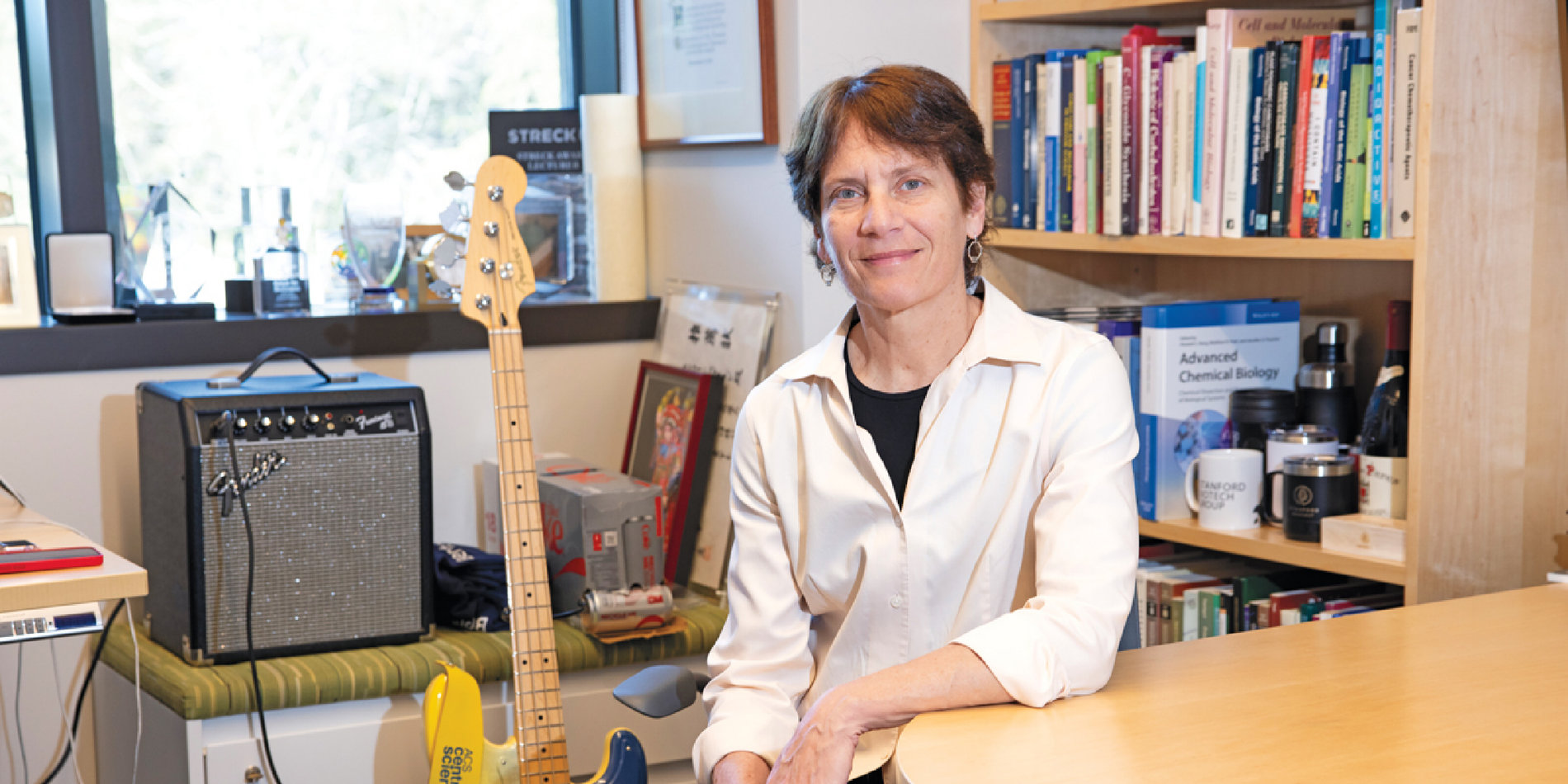Undergrad team receives $50,000 grant to develop treatment for eye cancer

Stanford undergraduate students Akriti Dhungana ’25, Daniel Stauber ’25, and Lucas Sosnick ’26 were recently awarded a $50,000 grant through the Sarafan ChEM-H Undergrad Entrepreneurship Program (UEP) to develop a new potential initial cancer treatment for patients using a novel CRISPR-based strategy. The team, known as Metascript (short for treating Metastatic Cancers with Transcriptome Engineering), will start by focusing on uveal melanoma, a rare type of eye cancer with a 50% survival rate.
“Uveal melanoma is one of the most significant unmet medical needs in the field of oncology,” said Sosnick. “Patients have to choose between their vision and their life. Current treatments only minimally extend their lifespan, so we really want to make an impact there.”
Traditional therapies such as radiation and chemotherapy are effective at killing cancer cells, but they also affect healthy cells. The team knew that gene therapies had the potential, but many current therapies run the risk of making changes to healthy cells. The solution, the team proposed, is to find targets that are unique to cancers.
Their strategy is based on a technology known as CRISPR-Cas13. The molecular cousin of the gene editing tool CRISPR-Cas9, CRISPR-Cas13 targets RNA rather than the DNA that Cas9 targets. Their strategy involves selectively and temporarily “turning off” RNA found in uveal melanoma cells but not in healthy cells. “Our idea sounds super easy – all we have to do is turn off a gene. But the reality is, there were a lot of unknowns. We had to find and bring together a lot of different components to make our approach work, like finding the right RNA to target, designing and making the therepeutic, delivering it to cells successfully, and more” said Stauber. They had to become the experts; there was no ophthalmologist or ocular oncologist who had all the answers.
“At multiple points, we wondered, ‘is this too ambitious?’” said Dhungana. But the potential to make an impact on patients helped them persist. The team had the opportunity to meet with survivors of uveal melanoma through A Cure in Sight (ACIS), a nonprofit foundation that was formed to spread awareness about uveal melanoma and provide support for diagnosed patients.
“The Metascript team has done an excellent job in identifying a novel approach to target uveal melanoma,” said Mark Smith, head of the UEP and Director of the Medicinal Chemistry Knowledge Center at Sarafan ChEM-H. “I believe they have the intellectual curiosity, drive, and world-class mentors to be successful with their research endeavors.”
Metascript is one of five teams of undergraduates that was selected in 2023 to participate in the program. Starting in September 2023, these student entrepreneurs worked with mentors from Stanford as well as biotech professionals to identify an unmet medical need, devise a strategy to create a medicine, and generate a business plan. The work of each of the five teams culminated in a presentation at the annual UEP Pitch Night on January 11, 2024. The audience of around 50 attendees included a panel of 15 judges comprising Stanford faculty and leaders from Gilead Sciences, Iris Medicine, Johnson & Johnson, Hexagon Bio, the Mark Foundation for Cancer Research, and more. In addition to Metascript, the other undergrad teams included:
- Olive Therapeutics (Ashal Ali ’26, Audrey Lin ’25, Darren Chan ’26, and Krishna Sharma ’26) aims to restore the quality of life for endometriosis patients.
- Sidera Therapeutics (Artemis Xu ’26 and Jason Cui ’26) focuses on a novel antibiotic target for gram-negative bacteria.
- W-Heal Therapeutics (Ariana Lotfi ’25, Ella Moore ’26, and Nicholas Neoman ’26) aims to transform wound care.
- Xerma Therapeutics (Carl Zhang ’25, Julia Vu ’26, Naryeong Kim ’24, and Tim Jing ’26) is exploring a first-in-class atopic dermatitis treatment.
This year marks the eighth consecutive year of the UEP, all under the leadership of Smith, who has a background of working in industry, founding companies, and inventing drugs. Smith has mentored nearly 150 undergrads through this program, and has seen them grow as scientists, and as entrepreneurs.
In addition to Smith, Metascript has received mentorship from Lei Stanley Qi, associate professor of bioengineering; Vinit Mahajan, professor of ophthalmology; Prithvi Mruthunjaya, professor of ophthalmology; David Myung, associate professor of ophthalmology; and Fabrizia Urbinati, director of Cell and Gene Therapies at the Stanford Innovative Medicines Accelerator.
With the $50,000 secured by winning the Pitch Night contest, Metascript will begin their work towards developing a therapy for uveal melanoma with three major steps. The first steps involve designing and making a simplified version of their proposed therapeutic to show that when the drug is administered into the cancer cells in a dish, those cells die. The final step, which according to the team would be the most challenging, is to do a mouse study to show the tumor size gets smaller after the drug is injected.
The team cites the program’s balance between providing strong mentorship and encouraging them to make their own decisions as an invaluable part of this unique experience. “I’ve learned so much about entrepreneurship, communication, team management, and science – these are skills I’m going to be carrying with me regardless of what I do in the future,” said Sosnick.



